This post may contain affiliate links. That means if you click on a link and make a purchase, I may make a small commission at no additional cost to you. Thank you for your support!
Cherry season has arrived!
At least it has here in my neck of the woods. I am lucky enough to live in an area surrounded by orchards of all kinds – apples, pears, and sooo many cherries. I have to tell you, I LOVE driving around seeing all those beautiful, red jewels of deliciousness hanging off the trees. If it wasn’t stealing, I would probably be raiding one of the nearby orchards every other day!
Fortunately, around these parts, we don’t have to sneak into our neighbors’ orchards to get fresh-off-the-tree cherries. At the moment, we can buy armloads of cherries, harvested each morning, straight from cute little orchard-side fruit stands for insanely cheap prices – it’s like cherry heaven! (I’m doing a little cherry happy dance right now!) I’ve got a semi-secret spot just down the road where I stop every few days to get pounds and pounds of gorgeous, dark, perfectly sweet cherries. Seriously, seriously delicious!
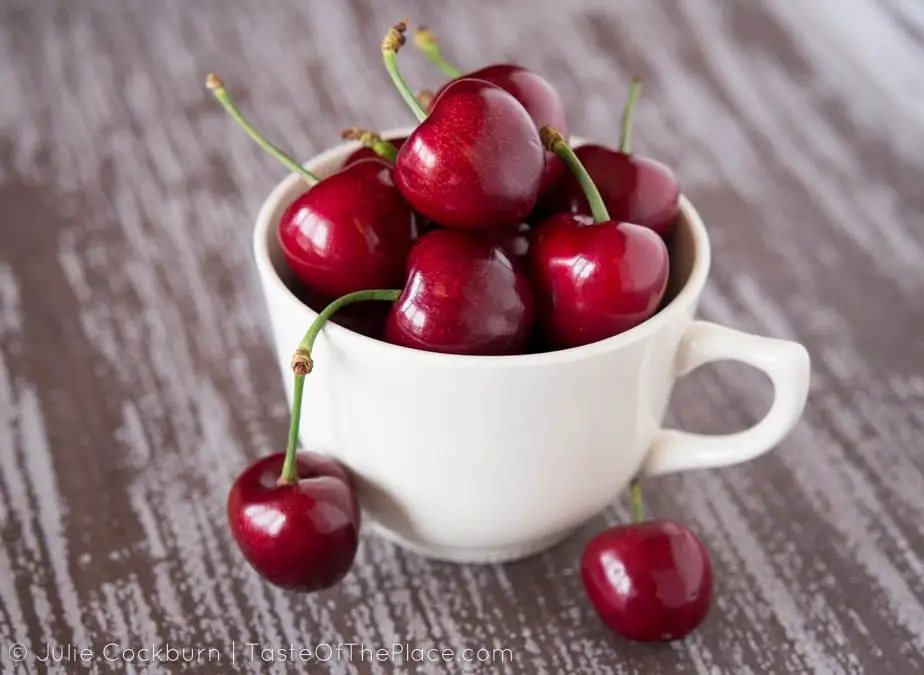
Mostly we just like to eat ‘em fresh, but occasionally it’s fun to go for something a little fancier. Enter the cherry clafoutis! This rustic, yet elegant, French country dessert is a combination of rich, eggy custard and beautiful, dark cherries. I like it because it isn’t overly sweet, contains only a handful of ingredients, comes together easily, and always elicits ooos and ahhhs from my guests. Perfect!
A bit of cherry clafoutis history
Traditionally (and still sometimes today), the cherry clafoutis was made with un-pitted, black cherries. The story goes that leaving the pits in gives the dish a more complex nutty or almondy flavor. (I think it is safe to say that most folks these days opt to remove the pits before baking and add a splash of almond and vanilla extract to make up the flavor difference.)
While cherries are the classic choice, clafoutis are also made with other types of fruits, and can sometimes even be found in savory versions with the sugar omitted and filled seasonal veggies.
The dish originally comes from the Limousin region of Central France, a rural area of the country known for its exceptional cattle (appropriately called Limousin cattle), groves of French oak prized in winemaking, and the famous Limoges porcelain.
By the way, clafoutis is pronounced with a slight emphasis on the first syllable, and a stronger emphasis on the last syllable (CLA-foo-TEA) – NOT the middle syllable (cla-FOO-tea). 😉
A few preparation tips
- Remember this is a rustic dish – think grandma in her French country kitchen whipping up dessert for a treat to be enjoyed after a day of summertime adventures.
- Be sure to butter and sugar your baking pan well. Eggs are sticky, and this will help prevent or minimize sticking.
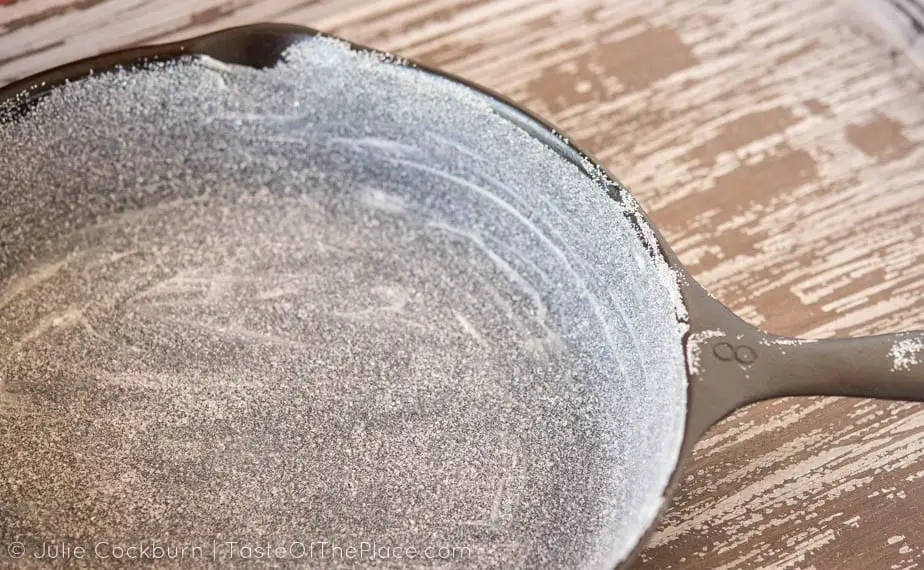
- Don’t overfill your baking dish (aim for no more than 3/4 full). The clafoutis will rise significantly during baking, and will overflow if too full.
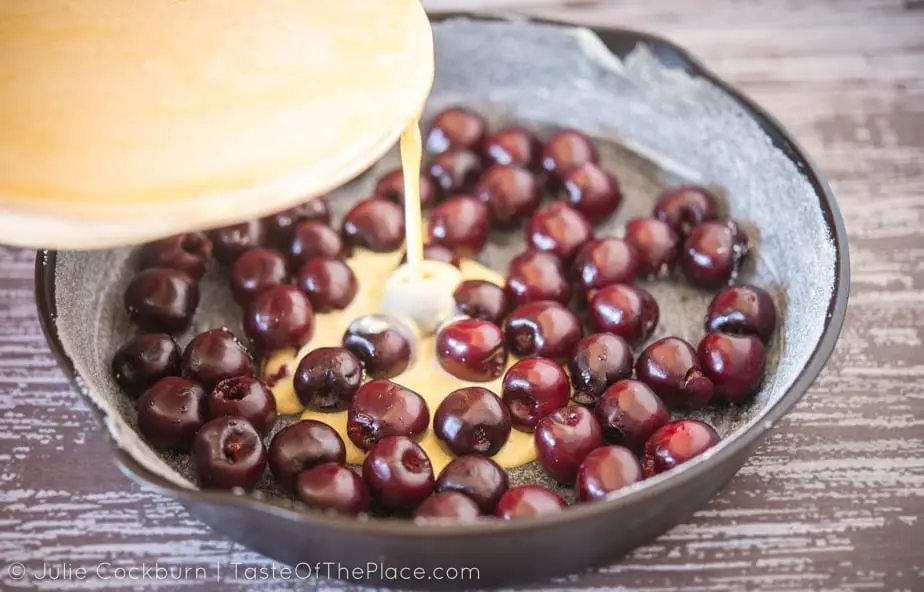
How to serve a clafoutis
However you like! Warm, just out of the oven is delicious and has a lovely, puddingy sort of texture. Room temperature and chilled are also divine, giving the custard time to settle into a layer of rich, dense, decadent goodness. Either way is extra tasty with a scoop of ice cream or a dollop of freshly whipped cream.
Many folks even enjoy a slice of clafoutis for breakfast – I think it would be perfect alongside an espresso with just a splash of cream. Yumm!
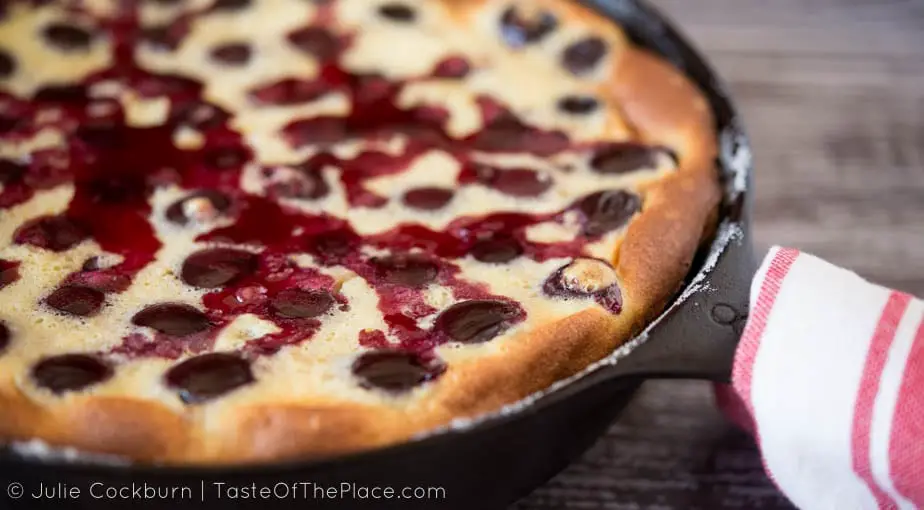
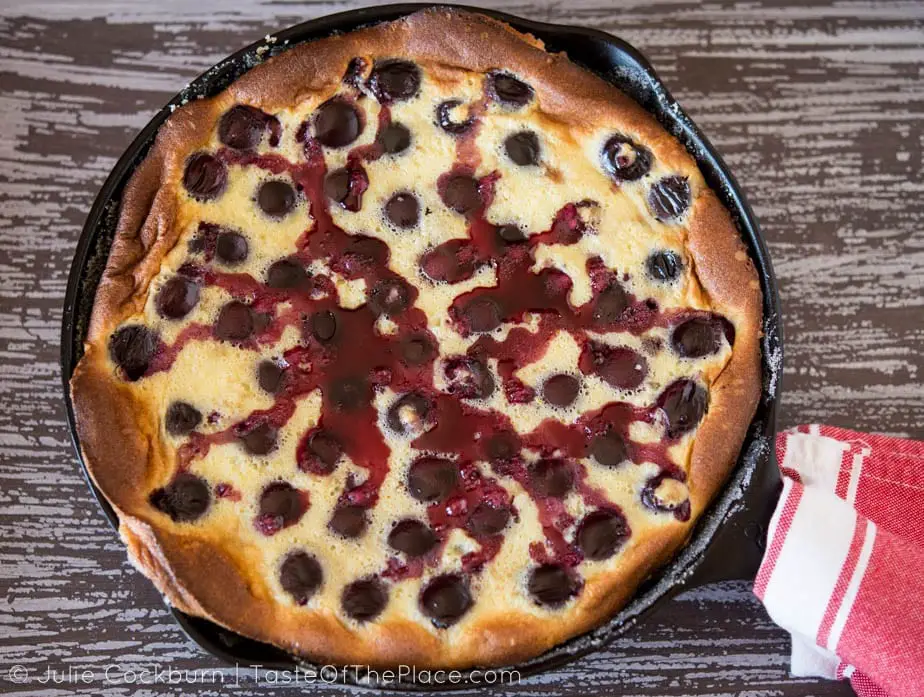

Cherry Clafoutis
- Yield: 8 1x
- Diet: Vegetarian
Description
Cherry clafoutis is a French countryside dessert that is both rustic and elegant. It’s a perfect combination of rich, sweetened, egg-y custard and fresh fruit. It comes together easily with just a few ingredients, is equally as tasty warm or chilled, and keeps well for several days – perfect for making ahead for a French-inspired picnic or for your next dinner party. Fill it with dark cherries at the peak of ripeness, or use whatever delicious fruit you have on hand.
Ingredients
- Butter and sugar, for the baking dish
- 4 eggs
- 1/2 cup all-purpose flour
- 1/2 cup sugar
- Pinch of salt
- 1/4 teaspoon vanilla extract
- 1/4 teaspoon almond extract
- 1/2 cup whole milk
- 1/2 cup heavy cream (also called heavy whipping cream)
- 1 pound dark cherries, stems removed, optionally pitted (See notes. I say pit them, but if you are a traditionalist, leave the pits in.)
- Powdered sugar for garnish, optional
- Freshly whipped cream or ice cream for serving, optional
Instructions
- Preheat your oven to 375°F.
- Generously butter and sugar a 10ish inch, round baking dish (just like you would butter and flour a cake pan). I like using a well seasoned cast iron skillet (mine is 10 1/2 inches), as it has a lovely, rustic feel.
- In a medium bowl, briefly whisk the eggs. Sift in the flour, and whisk until smooth. Whisk in the sugar, pinch of salt, vanilla extract, and almond extract until incorporated. Whisk in the milk and heavy cream until everything is well combined. You should have a thin, runny batter.
- Scatter the cherries evenly into the baking pan, and gently pour the batter over the cherries. Don’t fill the dish more than 3/4 full – if you have a smallish baking dish, you may end up with a bit of extra batter. (If so just bake it in its own little dish on the side – call it an extra sweet treat for the cook! 😉 )
- Bake the clafoutis at 375°F for 20 minutes, then reduce the heat to 350°F and bake for another 18 to 20 minutes, or until poofed up and browned around the edges.
- Remove from the oven and allow to rest for 20 minutes before serving. Don’t be alarmed – your clafoutis WILL deflate significantly.
- Serve warm, room temperature, or chilled. If you like, dust with powdered sugar just before serving, along with a dollop of freshly whipped cream or a scoop of your favorite ice cream. Yumm!
Notes
Cherry clafoutis is traditionally made with un-pitted cherries. The story goes that leaving the pits in adds a more complex, nutty or almond-y flavor. The decision is up to you, but I say go ahead and pit them.
- Category: Dessert or sweet breakfast
- Cuisine: French
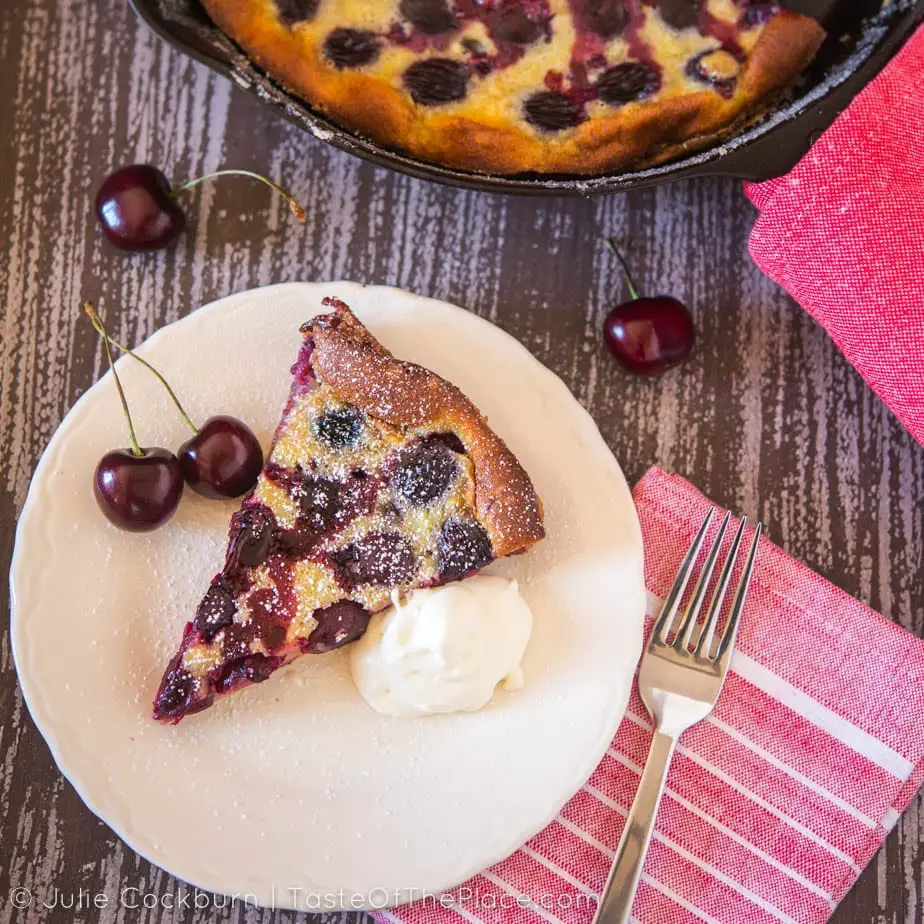















Leave a Reply